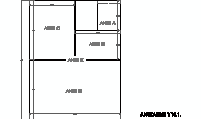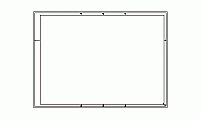CAD Blocks categories
 3D models
3D models home furniture
home furniture sanitary ware - bathrooms
sanitary ware - bathrooms professional equipment
professional equipment doors and windows
doors and windows people and animals
people and animals plants and trees
plants and trees vehicles - transports
vehicles - transports architectural details
architectural details mechanical - electrical
mechanical - electrical urban planning - civil works
urban planning - civil works safety health construction
safety health construction accessible design
accessible design drawing sheet
drawing sheet signals
signals construction machinery
construction machinery accessories and objects
accessories and objects maps and street maps
maps and street maps
Free ISO DIN A0 to A3 Drawing Sheet CAD Files

size: 6 kb
category: drawing sheets and presentations
description: Proportions and layout of ISO DIN A0, A1, A2, and A3 drawing sheets, adhering to ISO 216 standards. Each size scales proportionally with a consistent 1:√2 aspect ratio.
file extension: .dwg CAD - AutoCAD software
Comprehensive ISO DIN Drawing Sheets in .dwg Format
Download ISO DIN A0 to A3 Drawing Sheets (.dwg Format)
Download free ISO DIN A0, A1, A2, and A3 drawing sheet CAD files. These files are formatted in .dwg for seamless use in CAD software like AutoCAD, and they strictly adhere to ISO 216 standards. Perfect for technical, architectural, and engineering projects requiring scalable and standardized designs.
Comparing ISO DIN A0 to A3 with ANSI Sizes
The following comparison highlights the dimensions and proportions of ISO DIN A0 to A3 sheets and their closest ANSI equivalents:
ISO DIN A0 vs. ANSI E:
ISO A0 measures 33.1 x 46.8 inches, slightly taller but narrower than ANSI E, which measures 34 x 44 inches.
ISO DIN A1 vs. ANSI D:
ISO A1 measures 23.4 x 33.1 inches, making it taller but narrower than ANSI D at 22 x 34 inches.
ISO DIN A2 vs. ANSI C:
ISO A2 measures 16.5 x 23.4 inches, closely matching ANSI C, which is slightly wider at 17 x 22 inches.
ISO DIN A3 vs. ANSI B:
ISO A3 measures 11.7 x 16.5 inches, making it slightly taller and narrower than ANSI B, which measures 11 x 17 inches.
Key Differences:
- Aspect Ratio: ISO sizes maintain a 1:√2 ratio for easy scaling, while ANSI sizes use fixed proportions.
- Area: ISO sizes generally provide more drawing space compared to their ANSI equivalents.
- Scalability: ISO sizes scale seamlessly between formats (e.g., A0 to A1 halves in area), whereas ANSI sizes require reformatting.
Benefits of Using ISO DIN A0 to A3 Sheets
ISO DIN A0 to A3 sheets are widely adopted across industries due to their standardized proportions and scalability. Key benefits include:
- Consistency: The 1:√2 aspect ratio ensures seamless transitions between sizes for scaling and printing.
- Global Standard: These sizes are recognized and used internationally, simplifying collaboration on technical projects.
- Versatility: Suitable for a variety of designs, from A0 for large blueprints to A3 for compact documentation.
The Development of ISO DIN Standards
The ISO 216 standard was introduced to unify paper sizes internationally, with the DIN A series forming its core. The sizes were designed with a 1:√2 aspect ratio, ensuring that halving or doubling dimensions always produces a proportional size. This innovation, originating in Germany, was quickly adopted worldwide for its practicality and precision in technical and engineering documentation.
Frequently Asked Questions about ISO and ANSI Sizes
Q: How do ISO DIN sizes compare to ANSI sizes?
A: ISO DIN sizes have a consistent aspect ratio (1:√2) that allows proportional scaling between sizes, while ANSI sizes have varying proportions and fixed increments.
Q: Which is larger, ISO A0 or ANSI E?
A: ISO A0 (33.1 x 46.8 inches) is slightly taller than ANSI E (34 x 44 inches) but narrower in width.
Q: Can I convert between ISO and ANSI sizes?
A: Yes, but some adjustments may be needed to maintain layout consistency, as their aspect ratios differ.
Q: Why are ISO sizes more common internationally?
A: ISO sizes are based on a standard aspect ratio, making them easier to scale and use globally. ANSI sizes are primarily used in the United States.


















